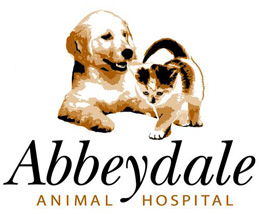Library
-
Sudden acquired retinal degeneration syndrome (SARDS) causes blindness in older dogs, most often females. The underlying cause of SARDS is unknown and there is no effective treatment for the condition. This handout explains the clinical signs observed in affected dogs, how the condition is diagnosed, and how to support a dog with SARDS.
-
Summertime is filled with lots of fun, but also follies. Besides the common threats of heat stroke and dehydration, pet owners need to be aware of the potential dangers associated with summer activities. Cookout fires can be dangerous and party menus often contain foods that can be harmful to pets. Outdoor celebrations that involve glow sticks or balloons can be threats as well. A quick review of possible follies will ensure a fun, safe summer with pets.
-
Summer is a great time to get outdoors and enjoy nature and the warm sunshine, especially with your pet. Pets are inquisitive and love to investigate their surroundings. Unfortunately, this trait can lead pets down the path of injury and illness. The following information will help you to avoid many summer dangers that can affect your pet.
-
Home care after surgery mainly involves the restriction of physical activity. Excessive physical activity often leads to injury or serious complications. Monitor the incision daily for signs of redness, swelling, discharge, or excessive licking, and never apply anything to the incision unless instructed to do so. To keep your dog from licking, your veterinarian can provide you with a protective collar or recovery suit. Your dog should gradually improve each day.
-
Each surgical patient is unique, so pain management strategies are fine-tuned to meet the needs of the individual cat before, during, and after surgery. Your veterinarian will begin managing your cat's pain before the procedure starts by giving preemptive pain medication. During surgery, strategies such as local freezing, continuous rate infusions, and anesthetic blocks may be used. After surgery, pain relief continues, with at-home medication and possibly physical medicine modalities.
-
At first glance he may look like a short-legged Cocker Spaniel, and it is true, the Sussex Spaniel is one of the more unusual spaniel breeds. He is also one of the rarest of all AKC breeds, perhaps because he tends to be, shall we say... talkative, especially if left out of the fun. Otherwise, this mild-mannered spaniel makes a great pal and an easygoing, often overlooked family pet.
-
The Swedish Vallhund is an alert, active, playful dog, always ready to join in whatever adventure you have in mind. He's devoted to family, especially good with children, and friendly to strangers.
-
Following certain steps and offering rewards and praise instead of reprimands will put a positive spin on a dreaded task. This will help make nail trimming a more pleasant experience for both you and your dog. If all else fails, do not hesitate to contact your veterinarian for further help.
-
Normal body temperature for dogs and cats is 101 to 102.5°F (38.3 to 39.2°C). Pets with temperatures above 104°F (40.0°C) or falls below 99°F (37.2°C) need immediate veterinary care. Temperature can be taken rectally or aurally. If taking your pet’s temperature is too difficult, take your pet to your veterinarian. If your pet’s temperature remains high or low, take him to your veterinarian.
-
Tapeworms are parasites that infect the gastrointestinal tract of dogs, other animals, and humans. Several types of tapeworms are known to infect pets, but the most common species observed in dogs is Dipylidium caninum, which is transmitted through fleas. Risk factors, clinical signs, treatment, and prevention are explained in this handout. Other, less common types of tapeworms that affect dogs and humans are also covered.

